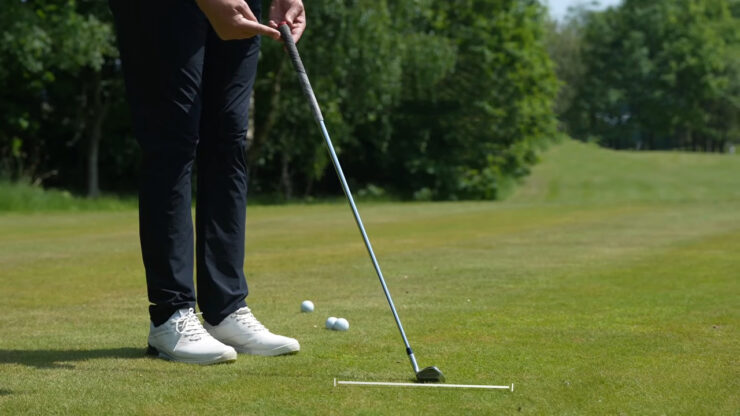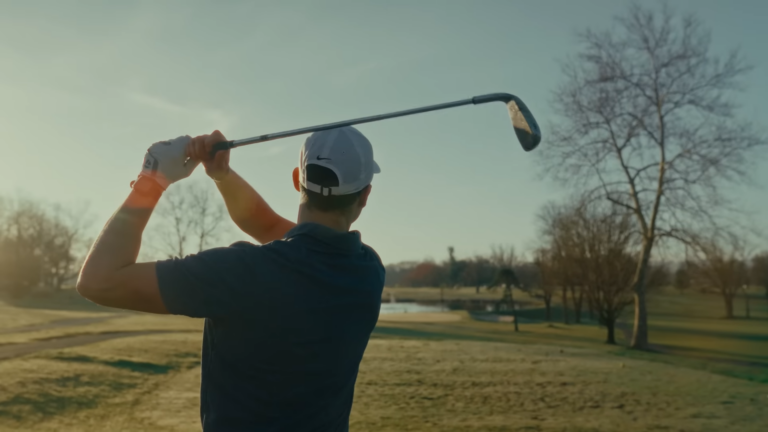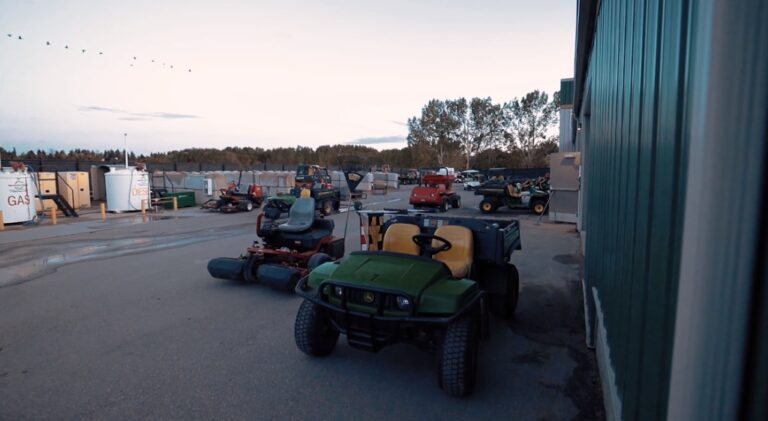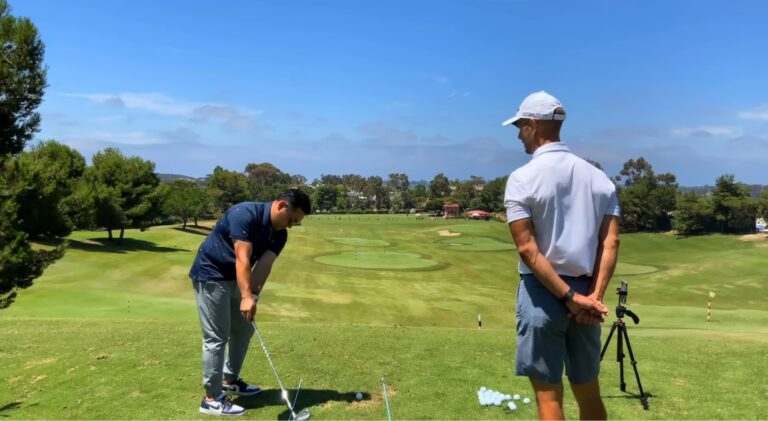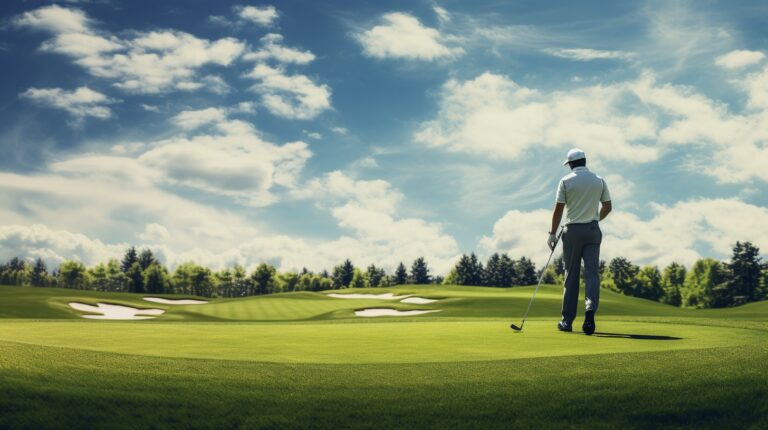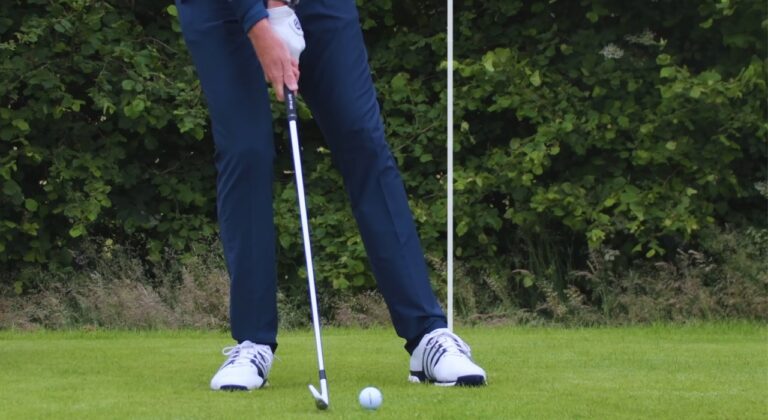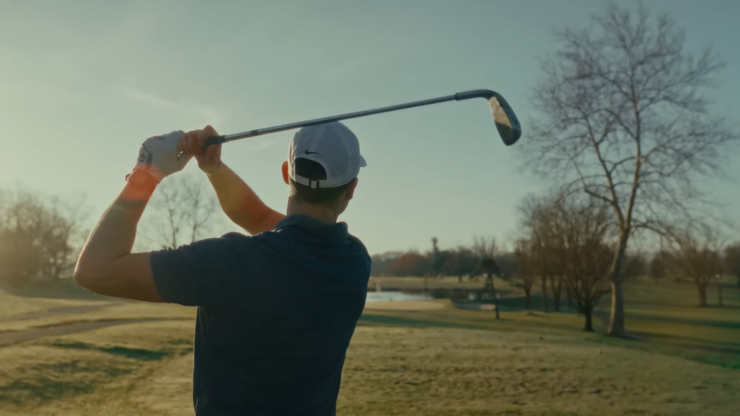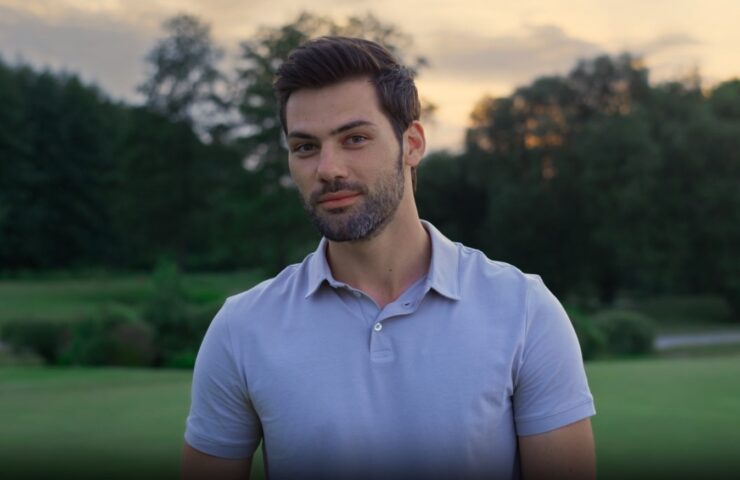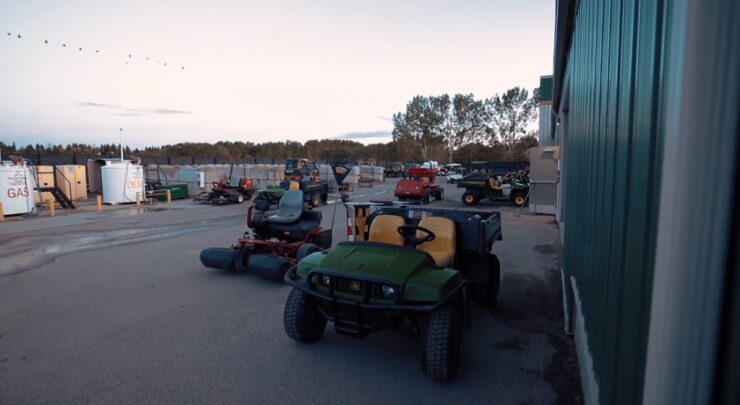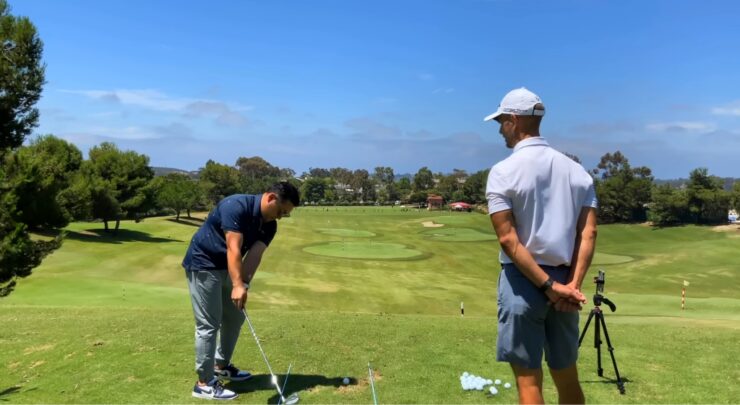When I first picked up a golf club, I was overwhelmed by the sheer number of choices in my bag. Each club, with its unique design and purpose, posed a simple yet profound question: “How far can I hit with this?”
Over the years, as I learned more about the game itself, I realized that understanding the distance of each club wasn’t just about raw power but about finesse, strategy, and the art of golf itself.
Now, I’ll share my insights and experiences, hoping to help you navigate this essential aspect of the game, just as I learned to.
The Role of Club Loft
The loft of a club refers to the angle of the clubface relative to the ground. It plays a pivotal role in determining the trajectory and distance of your shot.
- Higher Loft: Clubs with a higher loft, like wedges, produce shots that rise quickly and travel a shorter distance.
- Lower Loft: Clubs like drivers have a lower loft, resulting in longer shots with a flatter trajectory.
Swing Speed and Its Impact
Swing speed is another critical factor that influences the distance a ball travels. While the club’s design plays a role, your personal swing speed can vary the results.
- Faster Swing Speeds: Generally lead to longer distances. However, it’s essential to maintain control to ensure accuracy.
- Slower Swing Speeds: Might result in shorter distances, but they often offer better control, especially for beginners.
Balancing speed with control is a skill that players develop over time, and it’s crucial for optimizing club distances.
Distance Range for Each Club Type
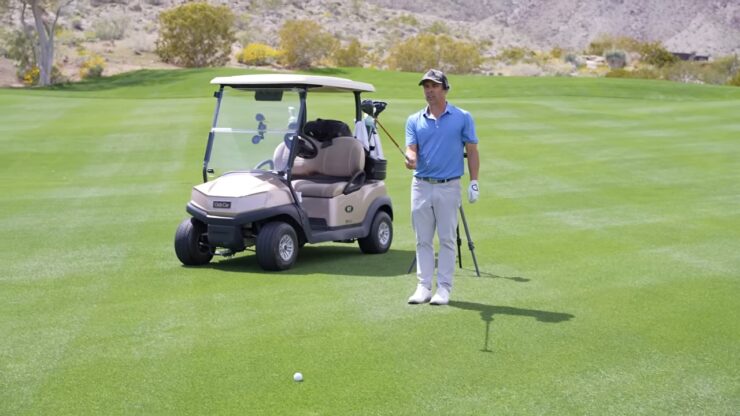
Each type of club is designed for a specific range of distances. By understanding these ranges, players can make informed decisions during their rounds.
The Longest Shots
The driver, often referred to as the “1-wood”, is designed for maximum distance. It’s typically used for the first shot on longer holes, especially par 4s and par 5s.
- Average Distance for Men: Between 230 and 250 yards.
- Average Distance for Women: Ranges from 200 to 220 yards.
Versatility on the Course
Fairway woods, ranging from the 3-wood to the 7-wood, offer a blend of distance and control. They’re ideal for shots that need to cover significant ground but also require precision.
- 3-Wood: Men can expect distances of 210-240 yards, while women typically achieve 180-210 yards.
- 5-Wood: For men, the range is 190-215 yards, and for women, it’s 165-185 yards.
These clubs are perfect for those moments when a driver might be too much, but an iron won’t cover the necessary ground.
What About Irons?
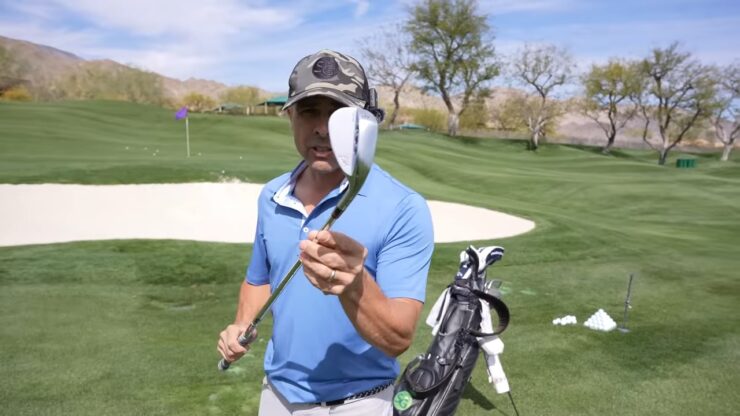
Irons are the workhorses of a golfer’s bag, offering a range of distances and lofts to tackle various situations on the course. From long irons to short irons, understanding their capabilities is key to mastering your game.
Long irons are challenging to master but can be incredibly rewarding when used correctly. They’re designed for longer approach shots where you need a combination of distance and accuracy.
- 2-Iron: Men can typically achieve distances of 190-220 yards, while women might expect 170-195 yards.
- 3-Iron: For men, the range is around 180-210 yards, and for women, it’s 160-185 yards.
- 4-Iron: Men often cover 170-200 yards, whereas women can expect 150-175 yards.
Middle irons are versatile tools, perfect for a variety of situations, from approach shots to getting out of tricky spots.
- 5-Iron: Men’s average distances lie between 160-190 yards, while women’s are around 140-165 yards.
- 6-Iron: For men, the typical range is 150-180 yards, and for women, it’s 130-155 yards.
- 7-Iron: Men can usually achieve 140-170 yards, and women might cover 120-145 yards.
Short irons are all about control, helping players set up easy putts or save par from challenging positions.
- 8-Iron: Men can expect distances of 130-160 yards, while women’s range is typically 110-135 yards.
- 9-Iron: For men, the average is 120-150 yards, and for women, it’s 100-125 yards.
With their higher loft, these irons produce shots with a steeper descent, ensuring the ball stops quickly on the green.
Wedges
Wedges come in various types, including pitching wedges (PW), gap wedges (GW), sand wedges (SW), and lob wedges (LW). Each serves a unique purpose, especially around the green.
- PW: Men’s distances are usually 100-140 yards, and women’s are 80-115 yards.
- GW: For men, it’s around 90-120 yards, and for women, it’s 70-100 yards.
- SW: Men can achieve 70-100 yards, while women might expect 60-85 yards.
- LW: This club is all about high, soft shots, with men covering 40-70 yards and women achieving 35-60 yards.
The Putter
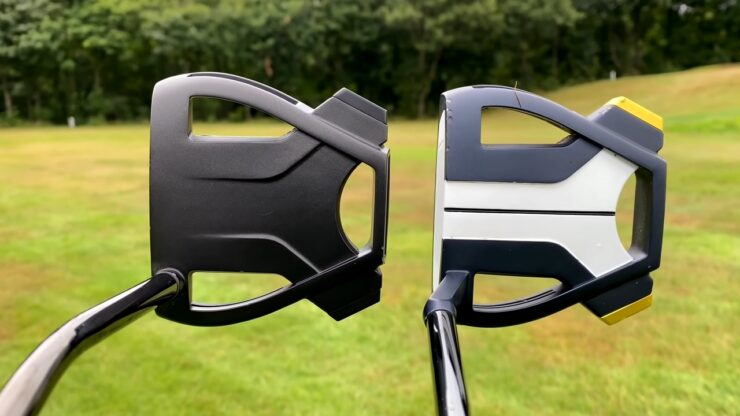
While the putter is primarily used for short strokes on the green, understanding its nuances can make a significant difference in your score. It’s not just about distance, but also about reading the green and mastering the art of the putt.
The Importance of Reading the Green
Before even taking a putt, it’s crucial to assess the green’s layout. Factors like grain direction, moisture, and undulations can influence the ball’s path.
- Grain Direction: Grass grows in a particular direction, which can either slow down or speed up your putt.
- Undulations: Slopes and hills on the green can change the ball’s direction, requiring players to adjust their aim and power.
Putter Length and Stroke Type
The putter’s length and the player’s stroke type are intertwined. While most putts won’t cover vast distances, the right putter can ensure better control and accuracy.
- Standard Putters: Typically range from 32 to 36 inches and are suitable for most players.
- Belly Putters: These are longer, anchored to the player’s belly, and can help stabilize the stroke.
- Broomstick Putters: The longest of the lot, these are often used by players who want to take their wrists out of the stroke.
Factors Affecting Club Distances
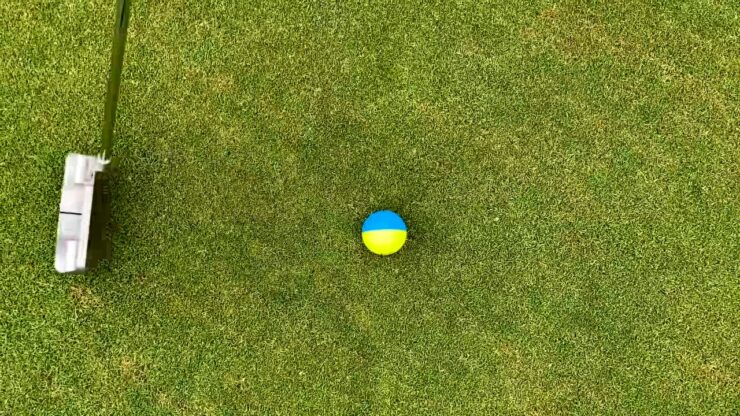
While we’ve discussed average distances for each club, several external and personal factors can influence these numbers. Recognizing these can help players adjust their expectations and strategies. Weather and course conditions can significantly impact how far the ball travels.
- Wind: A headwind can reduce distances, while a tailwind can add extra yards.
- Altitude: Balls tend to travel further in higher altitudes due to thinner air.
- Temperature: Colder conditions can reduce ball travel, while warmer temperatures can increase it.
Every golfer is unique, and personal attributes can influence club distances.
- Physical Strength: While golf isn’t just about power, stronger players can often achieve greater distances.
- Flexibility: A flexible swing can lead to better torque and, consequently, longer shots.
- Technique: Proper form and technique can optimize the energy transfer from the player to the ball, maximizing distance.
FAQs
How do course conditions affect club distances?
Course conditions, such as the type of grass, moisture levels, and even altitude, can influence how far the ball travels. For instance, balls tend to roll further on dry and hard fairways compared to wet ones.
Is it normal for my club distances to change over time?
Absolutely. As players refine their techniques, gain strength, or even as they age, club distances can change. Regularly assessing and understanding your distances is crucial to adapt and evolve your game.
Can custom-fitted clubs impact my distances?
Yes, custom-fitted clubs tailored to your swing and physique can enhance your performance, potentially leading to increased distances. They ensure optimal energy transfer and can improve both accuracy and distance.
How do I choose the right club for a particular shot on the course?
Apart from knowing the average distance of each club, consider factors like wind direction, hazards, course conditions, and your comfort level with the club. With experience, choosing the right club becomes more intuitive.
Why do I sometimes not achieve the expected distance even with a good swing?
Multiple factors can influence the actual distance, including ball type, external conditions, slight variations in swing mechanics, and even the point of impact on the clubface.
Should I prioritize distance over accuracy?
While achieving great distances can be advantageous, accuracy is often more critical, especially when navigating hazards or aiming for tight pin positions. A balanced approach, prioritizing both distance and accuracy, is usually the best strategy.
The Bottom Line
My journey in golf has been filled with trials, errors, moments of elation, and lessons learned. Grasping the distance potential of each club in my bag was a game-changer, not just in terms of scores but in how I approached each shot.
While I’ve provided guidelines and shared my experiences, remember that golf is a deeply personal sport. Your journey, your discoveries, and your unique swing will shape your distances. Embrace the process, trust your instincts, and let the love for the game guide you.
After all, it’s not just about how far you hit, but how you feel with each swing.
Related Posts:
- Why Should You Choose Dubai for the Golf-Playing…
- Top Performers of the PGA Tour So Far: Swinging for…
- Average Swing Speed for Each Skill Level of Golfer:…
- How Do You Know Which Golf Ball Is Best For You: Ace…
- How Much is Topgolf? 2024 - What You Need to Know…
- Golf Tips to Choose the Right Golf Club as You Play…

